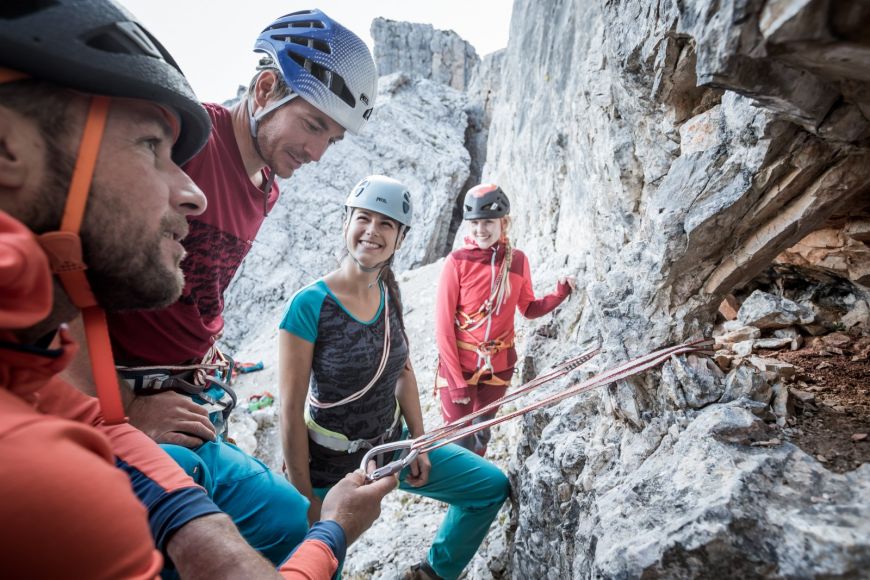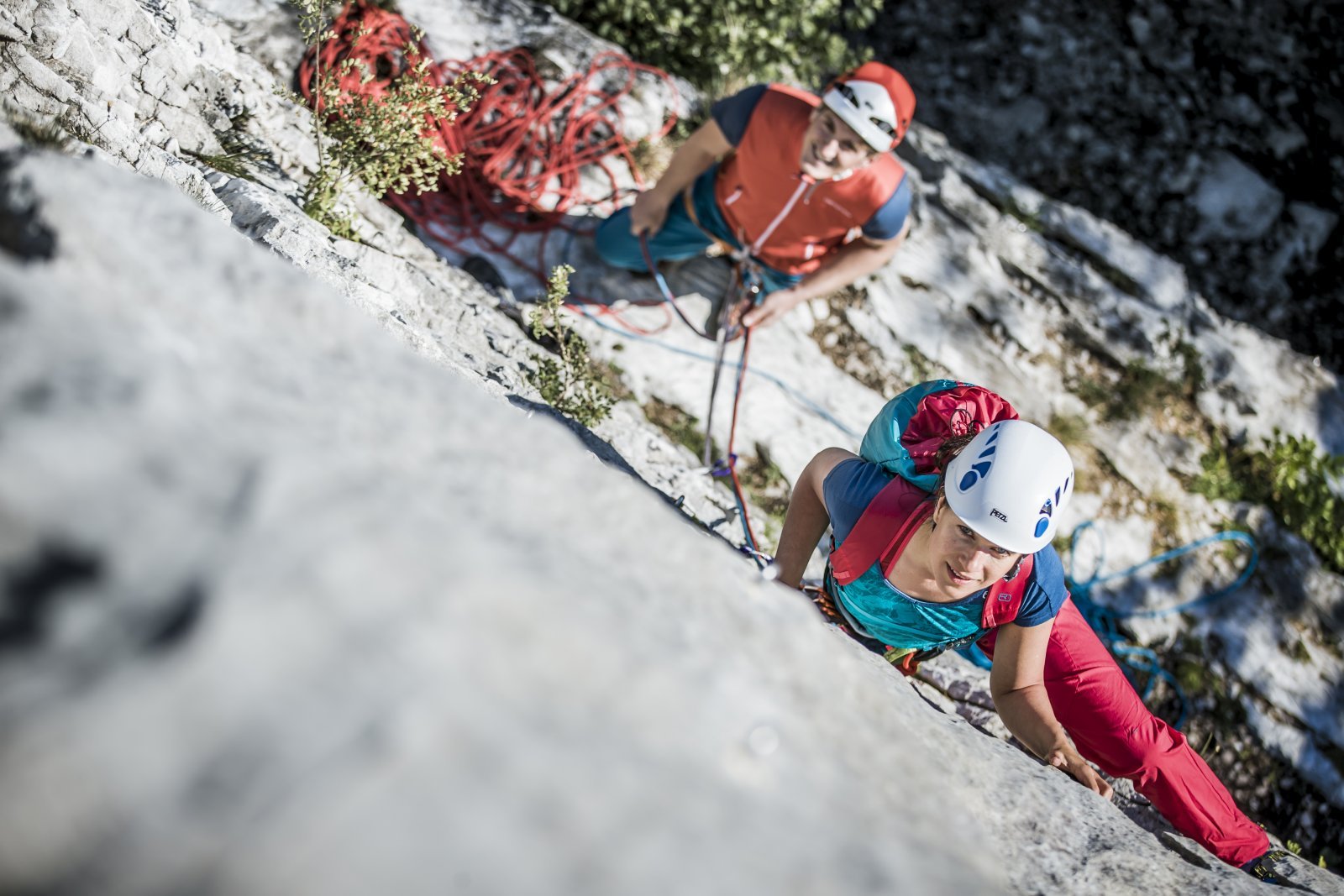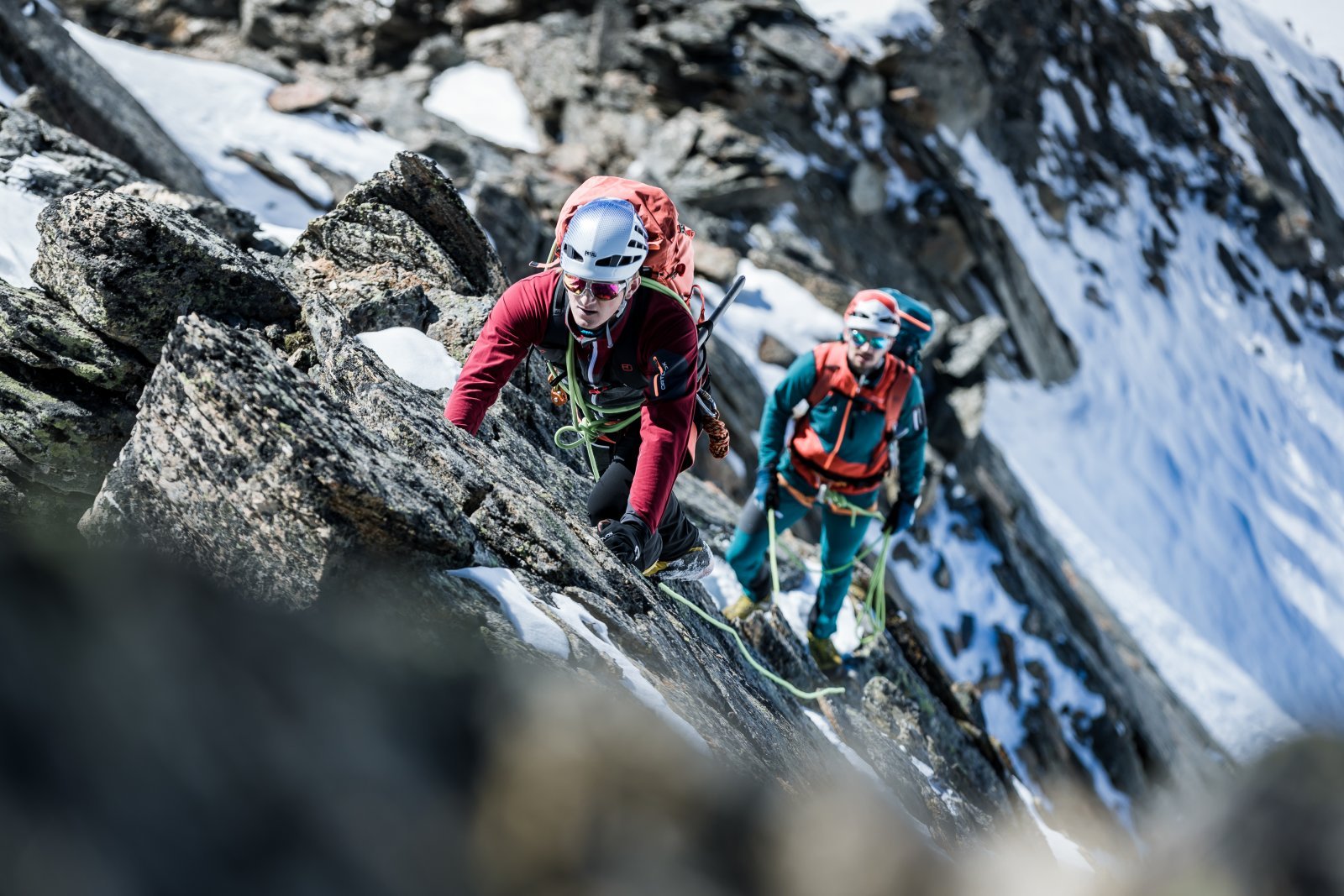
In this article, the AlpinStore technical team helps you plan an alpine climbing trip. It should be well thought out and realistic . Good planning is done in several steps, which we will detail below:
Step 1: Establish the right rope
The level of difficulty of an ascent should always be chosen according to the weakest person on the rope. This is the only way to achieve a safe and timely ascent. If the rope is made up of three people, additional elements must be taken into account. Not all Alpine routes are suitable for a three-person rope ascent.
Step 2: Choose a region
Depending on the roped party, you choose a region and a route.
The car journey, the duration of the approach walk as well as the duration of the ascent and descent are all part of the planning. If you do not know the area, it is useful to bring a map from the Alpine Club or a suitable map of the area.
Depending on the region, different rock types predominate, they will determine the type of climbing and thus imply new requirements.
Step 3: Evaluate the weather
In mountaineering, checking the weather conditions is extremely important.
Are rain and falling temperatures expected?
Is snow or strong wind forecast?
The date of the last precipitation can also be very useful. In addition to weather forecasts and your own observations, trusted people such as local guides, shelter wardens or local climbers can give you valuable information.
Step 4: Select a route and look for information
You must choose a suitable route, according to your physical and psychological climbing abilities, as well as those of your rope partner. You must take into account the difficulty, the commitment and the length of the route (ascent and descent included).
A topo-guide provides information about the route. It indicates the level of difficulty of the climb, the route of the run, the length, the level of engagement (protection) as well as the ascent and descent.
In addition, climbing guides contain topos that provide important information with standardised symbols about the route of the route. Every climber should always carry a guidebook with him.
Step 5: Additional information
Normally, the climber will find all the important information about the route in the climbing topo-guide. In addition, good climbing forums, local climbers and climbing schools can be important information relays.
Step 6: Good planning
The planning provided for in the planning of the race is only useful if sufficient margins have been allowed for and if intermediate targets are met. In case of emergency, the rope must stop the race and turn back early enough.
Step 7: Define an alternative goal and possibilities for turning back
In the mountains, various factors influence whether or not a rope can go into a route: orientation problems (approach), wet rock or over-frequentation due to too many ropes. For this reason, mountaineers should always have an alternative objective.
Ideally, they should find alternatives that are easily accessible and no more difficult than the planned route. In the wall itself, the rope must also have a plan B ready. It is reassuring to be able to rappel down in case of an emergency or to know how to get back down.
Step 8: Checking the equipment and preparing the backpack
After careful planning, it's time to pack your backpack.
You must take with you what is absolutely necessary for your safety. You must not weigh yourself down unnecessarily, because if your backpack is too heavy, you will move more slowly and with greater difficulty through the wall.
You must take care to distribute the load optimally so that the centre of gravity of the backpack is close to your body.
Everyone controls their own and their partner's equipment to make sure that nothing has been forgotten.
Step 9: Inform a third person
If a person or a rope is missing, it is very useful to know where they are going.
In some refuges, climbers are asked about the summit they plan to make.
Before you leave, don't forget to tell one or more of your friends or family what alpine race you are going to do.
And always save the local emergency number in your mobile phone!
Step 10: Adjusting what has been planned according to actual conditions
You spot the route of the track before you get to the wall. It is from a distance that you can identify and visualize the route and the start of the route in the wall. Once at the bottom of the wall you no longer have an overview.
You have to check if the weather has changed or if it is threatening, the state of the route, etc.
The rope must be able to react and adapt according to the conditions observed on the ground. This is known as a slippery schedule.





Leave a Reply
All fields are required